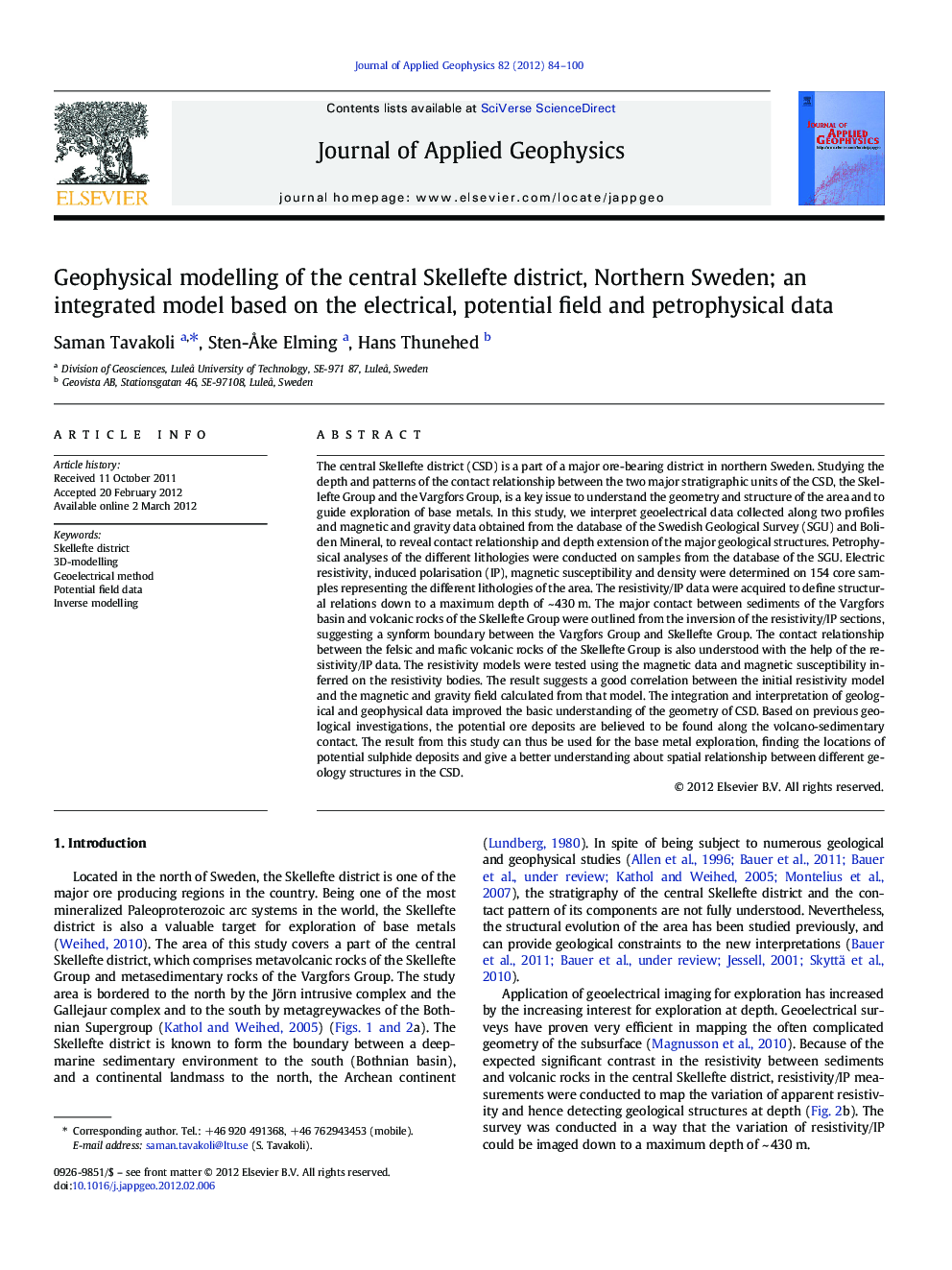| Article ID | Journal | Published Year | Pages | File Type |
|---|---|---|---|---|
| 4740547 | Journal of Applied Geophysics | 2012 | 17 Pages |
The central Skellefte district (CSD) is a part of a major ore-bearing district in northern Sweden. Studying the depth and patterns of the contact relationship between the two major stratigraphic units of the CSD, the Skellefte Group and the Vargfors Group, is a key issue to understand the geometry and structure of the area and to guide exploration of base metals. In this study, we interpret geoelectrical data collected along two profiles and magnetic and gravity data obtained from the database of the Swedish Geological Survey (SGU) and Boliden Mineral, to reveal contact relationship and depth extension of the major geological structures. Petrophysical analyses of the different lithologies were conducted on samples from the database of the SGU. Electric resistivity, induced polarisation (IP), magnetic susceptibility and density were determined on 154 core samples representing the different lithologies of the area. The resistivity/IP data were acquired to define structural relations down to a maximum depth of ~ 430 m. The major contact between sediments of the Vargfors basin and volcanic rocks of the Skellefte Group were outlined from the inversion of the resistivity/IP sections, suggesting a synform boundary between the Vargfors Group and Skellefte Group. The contact relationship between the felsic and mafic volcanic rocks of the Skellefte Group is also understood with the help of the resistivity/IP data. The resistivity models were tested using the magnetic data and magnetic susceptibility inferred on the resistivity bodies. The result suggests a good correlation between the initial resistivity model and the magnetic and gravity field calculated from that model. The integration and interpretation of geological and geophysical data improved the basic understanding of the geometry of CSD. Based on previous geological investigations, the potential ore deposits are believed to be found along the volcano-sedimentary contact. The result from this study can thus be used for the base metal exploration, finding the locations of potential sulphide deposits and give a better understanding about spatial relationship between different geology structures in the CSD.
